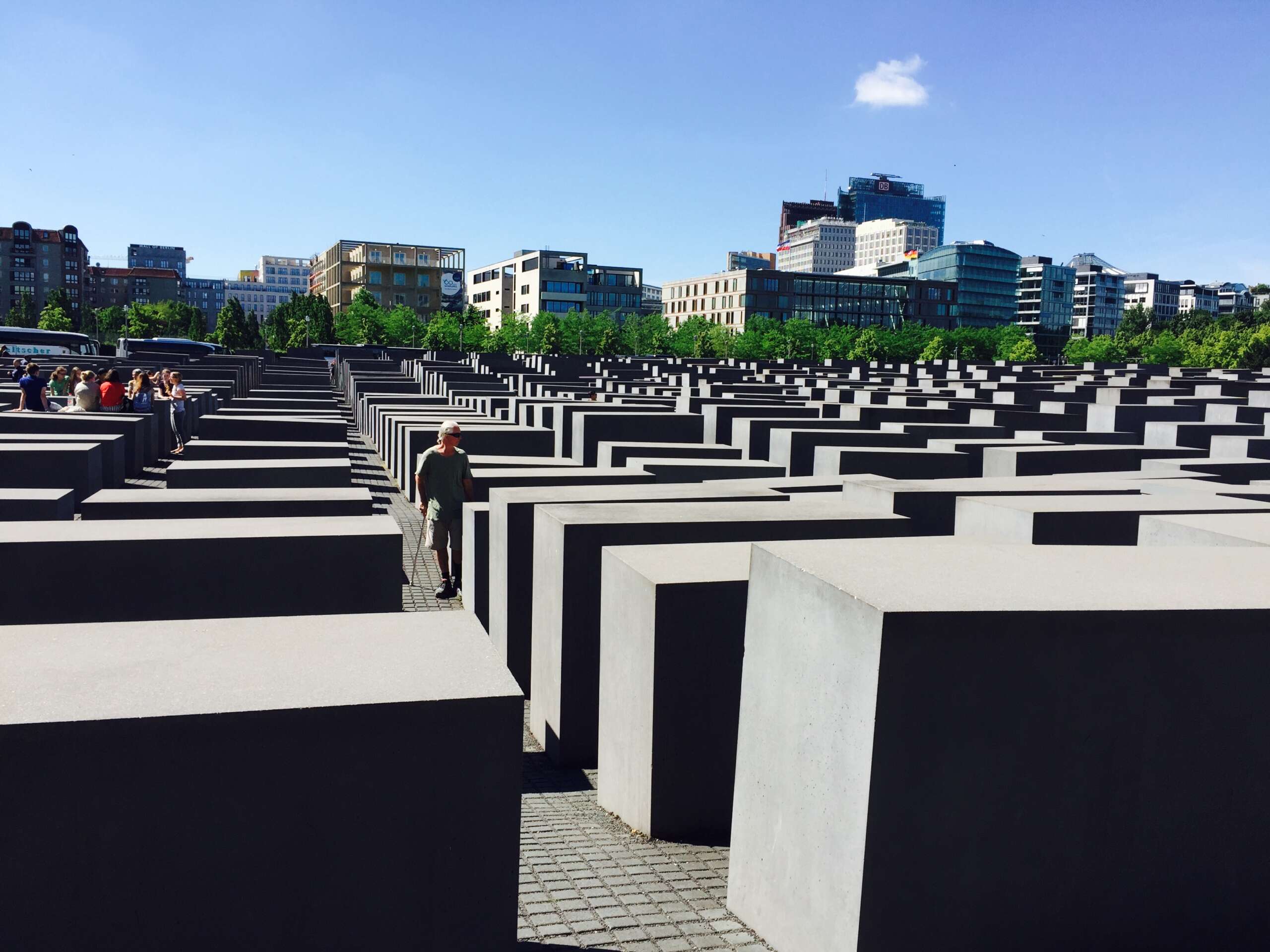
We have always been conscious of Berlin – its celebrity up there with London, Paris or New York. Because of this I think we were expecting a city on par with these three. What we didn’t really expect to see was a city still under re-construction. In hindsight I suppose we shouldn’t have been surprised – after all its been only 72 years since the end of WW2 and 28 years since the fall of the Berlin wall.

Come 2017 and we arrive on another abnormally hot (31 degrees) for Europe Monday. We find no internet coverage at the main Berlin HBF train station, thus being unable to use Google maps to locate our hotel – must fight in line to secure a taxi. Our hotel (in old Eastern Berlin) reveals itself to be typical of the new style of architecture found in this city – grey, decumbent low-rise. Its spacious and cool and only metres from many of Berlins main sights.

We find the city to be sprawling and flat. Its pretty easy to either walk or cycle from our location – the city center Mitte area to some of its outer lying suburbs. Cranes dot the skyline, there are many construction sites and many more very large vacant lots awaiting redevelopment.

In order to understand these vacant lots some quick Googling reveals that by the end of WW2 Berlin had been subject to 363 air raids, over 86,000 tons of bombs had been dropped on the city, over half of its population had fled and the total number of dead ranged from 20,000 to 50,000. It was described as a post-apocalyptic world, one of the largest and most modern city’s of Europe left a wasteland. We begin to understand that our expectations of a fully functioning city after only 72 years had been somewhat ambitious.

left as a reminder of war
Because of its sprawl we decide that the best way to see most things would be to utilise the ever handy hop on hop off bus. Purchasing a two-day pass we made our way to our closest stop – Checkpoint Charlie and commenced to spend the next two days visiting the sights of the city – Brandenburg Gate, Alexanderplatz, Pariser Platz, Charlottenburg and the remnants of the Berlin Wall to name a few. The highlights for us – and both within walking distance from our hotel was the Memorial to the Murdered Jews of Europe and the location of Hitlers (now demolished) bunker. Hitlers bunker (where he committed suicide) is kept deliberately low profile by the Berliners – we only found it by putting together its location from previous travelers blogs. It is on the route of some of the informative walking tours offered in Berlin however, as a small party descended on us as we were standing in a car park reading a plaque – the only indication of its former existence.

Berlin is trying to live down its past and concentrate on its future. It’s a young persons city with 40% of its population under age 35. It has lax attitudes to drugs – you can surreptitiously smoke a joint in the local park here without repercussions and its a capital for fashionista notably easy to wear street ware. My take on all this however is that it will never leave its Nazi past behind. As too are Anzac parades becoming more popular as the years progress – so too I predict that War tourism will only increase here. Our photos taken in front of Checkpoint Charlie lie testament to this.

So today – Thursday we are once again on the train. This time heading Eastwards crossing the entirety of Germany to disembark in Amsterdam. We are passing fields and fields of wind farms which begs me to ask – why isn’t Australia investing more in this type of energy? Darryl is happy and heads down in a Sudoku.

Some interesting observations – Berlin doesn’t have the historical origins of other European cities – its initial founding was only in about 1231.The hop on hop of bus drivers need to rely more on their driving skills and less on their brakes.
Berlin really is the city of contrasts. All over one can find new buildings along side old buildings – the new buildings built on the sight of bombed out craters. There is a distinct architectural difference in the buildings found in the former Communist controlled East side as opposed to the democratic West side. One concentrating on huge blocks full of small apartments – the emphasis was more on wide streets and parks. The other on more affluent, larger, better amenities apartments.

There are patches of forest and large parks all throughout the city (more than I have seen anywhere else). Although I wonder if these parks will still be here in 50 years time?
The city spends 35 million euro each year on removing graffiti.

Next blog Amsterdam.
If you have enjoyed this blog please like and share
For more information and photographs please visit –
https://darmatravels.com/
